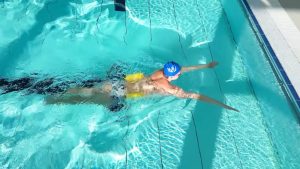Swimming with stitches can pose risks, such as infection or delayed healing. However, with proper precautions, you can minimize these risks. It's essential to consult your healthcare provider before making a decision. For more in-depth information, consider reading about whether can you swim with stitches.
Assess the Risk
Type of Water
- Chlorinated Pools: Chlorine can help prevent bacterial growth, but high levels might irritate the wound.
- Salt Water: Saltwater has natural healing properties but can also contain harmful microorganisms.
- Fresh Water: Lakes and rivers have the highest risk of containing bacteria that can infect the wound.
Condition of the Wound
- Age of the Stitches: Wounds less than 48 hours old are highly susceptible to infection.
- Location and Size of the Stitched Area: Stitches on certain body parts, like the feet or hands, are more prone to infection due to frequent contact with surfaces or water.
Protective Measures
Waterproof Bandages
- Use high-quality waterproof bandages that seal the stitched area completely. Ensure the bandage covers the stitches plus an additional margin of at least one inch around the entire wound to prevent water penetration.
Time Limit
- Limit your swimming time to reduce exposure. A maximum of 15-20 minutes is advisable to minimize the risk of the bandage loosening and water seeping through.
Post-Swim Care
- Immediately after swimming, carefully remove the waterproof bandage, clean the stitched area with antiseptic, and apply a new, dry bandage. Monitor the wound for any signs of redness, swelling, or discharge.

When to Avoid Swimming
- Recent Surgery: Avoid swimming if your stitches result from a major surgical procedure, as these wounds are more prone to complications.
- Signs of Infection: If the stitched area shows signs of infection, such as redness, swelling, or pus, avoid swimming and consult your healthcare provider.
Alternatives to Swimming
If swimming poses too high a risk, consider other forms of low-impact exercise such as walking, cycling, or yoga, depending on the location of your stitches and your overall health condition.